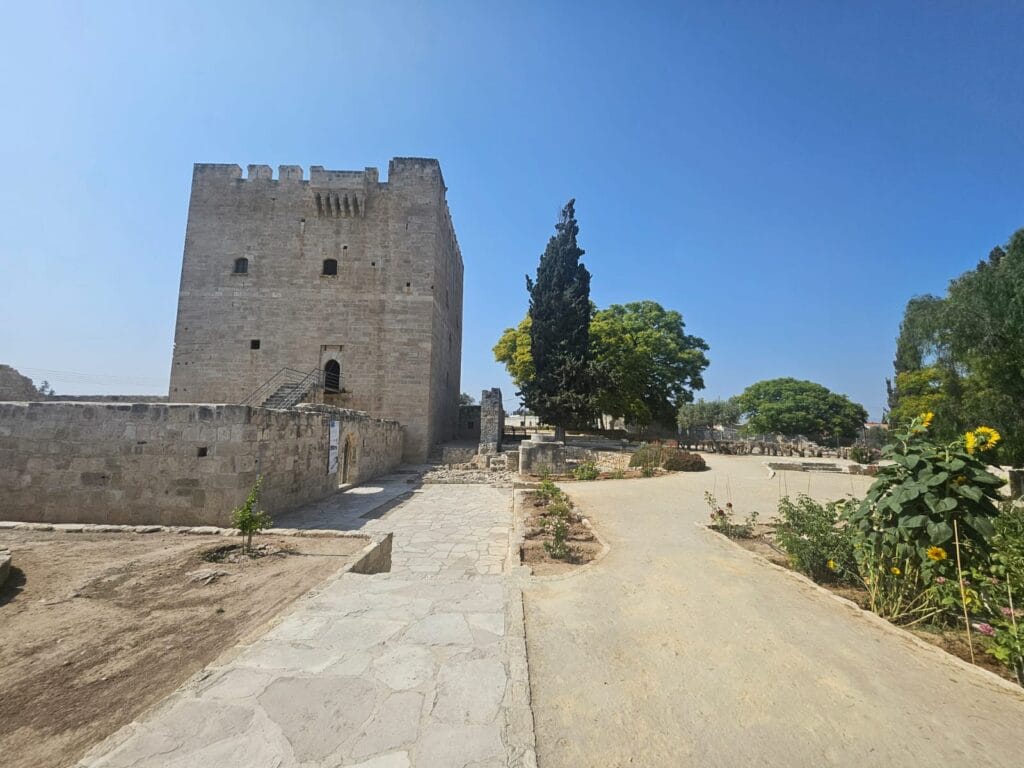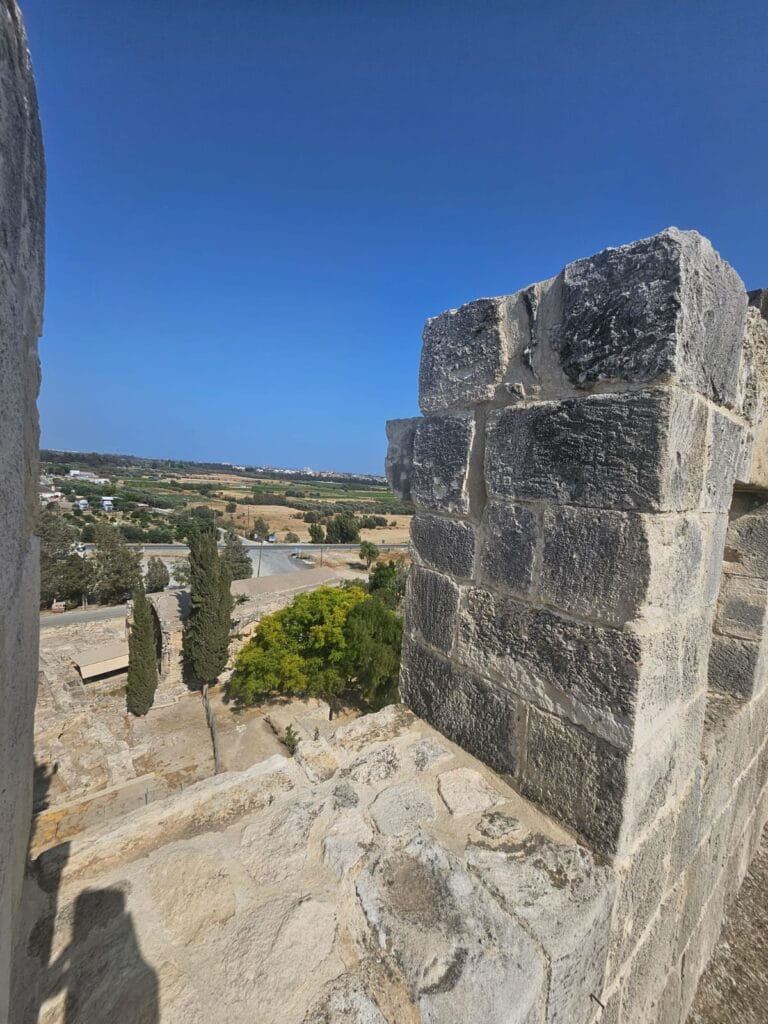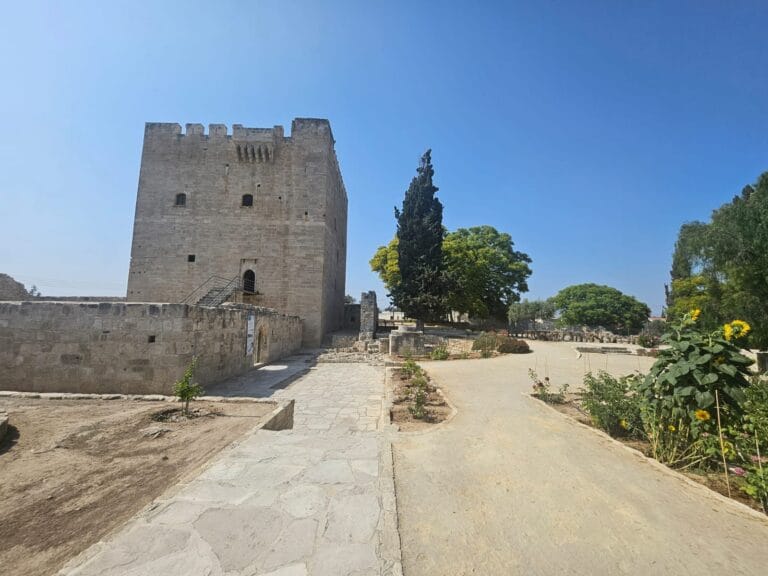
Discover Kolossi Castle near Limassol, a beautifully preserved Crusader fortress that once guarded sugarcane and Commandaria wine — and played a key role in Cyprus’ medieval history.
🏰 Kolossi Castle: The Sweetheart of Cyprus’ Crusader Past
Just outside the coastal city of Limassol stands Kolossi Castle — small but mighty, and steeped in history. While it may not be the largest castle on the island, Kolossi is one of the most charming and significant, especially for those curious about Crusader tales, medieval life, and Cyprus’ sweet wine legacy.
📍 Where Is Kolossi Castle?
Kolossi Castle lies about 11 kilometers west of Limassol, easily reachable by car or tour bus. It sits among citrus groves and vineyards, a reminder that this area once thrived under both military rule and agricultural prosperity.
🏰 A Fortress Built for Knights
Kolossi Castle was originally built in 1210 by the Knights of the Order of St. John of Jerusalem, also known as the Hospitallers. It served as a commandery — a regional administrative center — during the time of the Crusades, when Cyprus was a strategic stronghold for European knights en route to the Holy Land.
The current version of the castle was rebuilt in 1454, and that’s what visitors can explore today:
- A three-story tower with thick stone walls
- A rooftop with panoramic views of the surrounding farmland and sea
- A spiral staircase, small rooms, and a medieval feel throughout
It may look simple on the outside, but every stone tells a story.

🍷 The Birthplace of Commandaria Wine
One of the most fascinating parts of Kolossi’s history? Wine.
Kolossi was once the center of Commandaria wine production — a sweet, fortified wine made from sun-dried grapes, still produced in Cyprus today. In fact, Commandaria is believed to be the oldest named wine still in production, and its name comes from “Commandery” — the military district headquartered at Kolossi.
You can still see the remains of the wine presses and storage areas near the castle grounds.
🛡️ Tensions Between Crusader Orders
While the Knights Hospitaller ran Kolossi, they weren’t the only power players. The Knights Templar also had influence in Cyprus, and there was tension between the two orders. At one point, the Templars seized Kolossi briefly, but it was later returned to the Hospitallers.
This back-and-forth tells us that Kolossi wasn’t just a quiet rural estate — it was a strategic prize, both militarily and economically.
🧭 Why Visit Kolossi Castle?
- Compact but rich in history – You can explore the castle in under an hour, but you’ll walk away with centuries of stories.
- Beautiful photo opportunities – From medieval stonework to lush vineyards in the distance.
- A great stop on your way to other sites – Close to Kourion, Episkopi, and Limassol.

📸 Pro Tip for Visitors
Visit in the early morning or late afternoon to avoid the midday heat and catch the best lighting for photos. There’s a small entrance fee, and while the castle isn’t heavily furnished, its authenticity and setting make it a must-see.
🧡 A Small Castle With a Big Legacy
Kolossi Castle is a reminder that history doesn’t need to be grand to be powerful. With its mix of Crusader politics, sweet wine, and sunny fields, it’s a perfect slice of Cyprus’ past — compact, quiet, and unforgettable.



